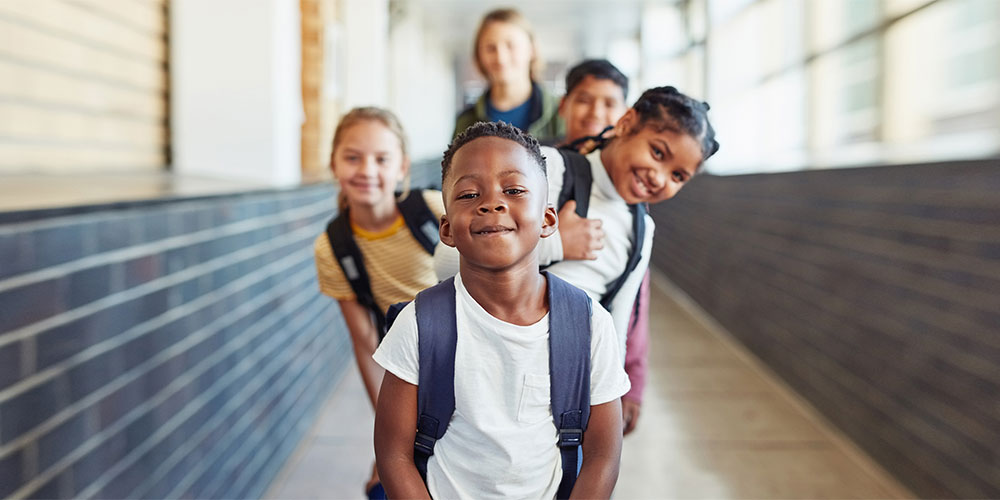Educators have a duty and a concern to ensure that each of their students receives the best education and opportunities possible. Discipline is no different. When done right, discipline serves not only to keep order in the classroom, but also to offer a teaching moment that helps students grow.
Unfortunately, the truth is that students are often not disciplined equally, and the corrections that students of color face are often not proportionate to the cause. In fact, a study from 2011–2016 showed that Black students and students with disabilities are suspended at twice the rate of white students with no disabilities. According to Kara Arundel at K–12 Dive:
“Because cultural norms can greatly influence a student’s behavior or a teacher’s perception of expected behaviors, training and awareness of culturally responsive positive behavioral interventions and supports should be a priority, so that schools can create a safe and welcoming learning environment for all students.”
To enforce truly fair and equitable discipline, educators must consider the culture and background of each student. Thus, the most equitable way to discipline students is through subjective discipline.
So what does subjective discipline entail, exactly?
Culturally Responsive Positive Behavioral Interventions and Supports
One of the best ways to fit the discipline to the student is through culturally responsive positive behavioral interventions and supports (CR-PBIS). This framework builds on traditional PBIS, which seeks to reward good behavior and understand the reasons for bad behavior, but also adds consideration for the student’s culture.
According to the Florida Positive Behavioral Interventions and Supports Project, “A student’s unique cultural and learning experiences are used as the starting point for establishing expected behaviors and learning goals, not an afterthought.” A student’s unique culture and learning experiences should be the first thing any educator considers when it comes to discipline or behavioral intervention. Because every student is different, subjective discipline is a necessity.
To be culturally responsive, classrooms and schools have to be truly affirming of all of their students’ cultures. In fact, denying a student’s culture can only lead to more behavioral issues, as the student will likely feel unsupported. For CR-PBIS to work, educators cannot simply offer an occasional nod toward cultural awareness.
Cultural sensitivity must be at the heart of any discipline, lesson plan, or reward system. Educators must know enough about their students’ cultures that they can avoid harmful stereotypes or microaggressions that alienate students. It will be well worth your time to remove harmful language from your classroom and ensure that students also respect each other’s cultures.
This is why it’s important for school stakeholders to come from a diverse range of backgrounds, including marginalized groups. These marginalized stakeholders should have a say in the culturally responsive initiatives and policies that the school enacts. Keep in mind that no one person from a marginalized group is the spokesperson for that entire group, and it’s always a good idea to hear varied perspectives.
According to the Florida PBIS Project, “All behavior serves a function,” whether it’s good or bad. It’s important for educators to be empathetic and understand the ways that students’ behaviors serve them, so they can address that behavior going forward.
Creating a CR-PBIS Framework
CR-PBIS is the most empathetic and responsible way to handle behavioral issues in the classroom. We’ve discussed how it’s necessary to be affirming and validating of students’ cultures and experiences. But how do you go about creating a framework in which to practice CR-PBIS? In 2012, The Equity Alliance outlined these five steps:
- Form CR-PBIS learning labs. The process of learning CR-PBIS should involve everyone: teachers, administrators, students, families, and sometimes even local representatives. The point of a learning lab is to familiarize everyone with CR-PBIS and to “facilitate a ‘home grown’ equity-oriented systemic transformation by focusing on three outcomes: expanded patterns of activity, corresponding theoretical concepts, and new types of agency.”
- Determine the desired outcomes of CR-PBIS. Using the conversations in the learning labs, educators should define the kinds of outcomes they want to see from implementing CR-PBIS. Ideally, you’ll create a unified, school-wide plan that’s tailored to your students’ particular needs. Consider the individual factors of a student’s behavior (e.g., academic performance, past behavioral issues) within a social context to determine the best way to support good behavior and engage the student in the best possible learning experience.
- Understand cultural mediation and culturally responsive practices. Cultural mediation is simply the study of cultural differences and how those differences affect our lives. It uses data (more on that later) to build bridges between different cultures — without losing one culture or the other. Through attentiveness to cultural differences, you can start putting into place culturally responsive practices that affirm students’ cultures rather than stifle them.
- Use data for continuous improvement and innovation. Collecting data can help educators better understand students’ cultural backgrounds as well as more clearly show which students need further intervention. Educators can also use data to track those students for whom the current CR-PBIS framework is working and those who are continuing to struggle, so that they can receive the help they need.
- Recognize that this is an ongoing system-wide transformation. Implementing CR-PBIS isn’t just a change for one educator to make. Subjective discipline is an issue that requires systematic change. Beyond that, the change should be ongoing. As our understanding of culture changes, so should our CR-PBIS frameworks.






